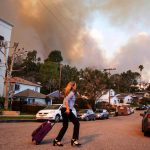Rob Symons/All Rise
- A record 227 environmental activists were murdered in 2020, a Global Witness report found.
- But that number is likely an undercount, and the group said the toll may rise in coming years.
- Many killings are linked to logging, mining, and agriculture, with Indigenous people heavily targeted.
- See more stories on Insider’s business page.
Fikile Ntshangase was the nearby coal mine’s “worst nightmare,” according to her daughter.
The 65-year-old led a group that was taking legal action against the company that ran the mine, located just outside of South Africa’s Hluhluwe-Imfolozi nature reserve.
“She organized, she campaigned and educated people about their rights,” her daughter, Malungelo Xhakaza, said in a new report from the human-rights watchdog group Global Witness. “Ultimately, I believe that’s what cost my mother’s life.”
In October 2020, Ntshangase was shot in her living room and died.
She’s one of 227 environmental activists who were murdered in 2020, according to the Global Witness report, which was published on Monday. That’s an average of more than four activists murdered every week. It’s more killings than the group has ever recorded in a single year since it started publishing these reports in 2012.
Still, the number is likely an undercount. Global Witness compiles its database using information that’s publicly available online. But many cases likely go unreported, especially in countries with heavy suppression of media or with ongoing conflicts that make it difficult to parse out particular incidents.
For that reason, the report emphasizes that its figures are “only a partial picture” of these killings.
“The people killed each year defending their local places are also defending our shared planet – in particular our climate,” environmentalist Bill McKibben said in a statement for the report. “The activities that flood our atmosphere with carbon – fossil fuel extraction and deforestation – are at the heart of so many of these killings.”
Killings are often linked to resource extraction
The largest number of murders (65 of them) happened in Colombia, followed by Mexico (30) and the Philippines (29). Those three countries together accounted for more than half of the killings in the report.
In cases where a perpetrator could be identified, hitmen carried out the most murders, killing a total of 89 activists. Militia or guerrilla groups were linked to 30 deaths, armed forces to 18, and police to 12.
Mexicali Resiste
Over one-third of the fatal attacks targeted Indigenous people. One of those killed, Óscar Eyraud Adams, was shot just a month after showing local media how dry the land had become in Tecate, Mexico. Adams had complained that large companies like Heineken were diverting water from the community, according to a local report on his death.
“I thought people might beat or kidnap him, but I never imagined they would go as far as they did,” his mother, Norma Adams, told Global Witness.
“Every person like this around the world is at risk. And they are at risk, in the end, not just because of another local person who pulls the trigger or plunges the blade; they’re at risk because they find themselves living on or near something that some corporation is demanding,” McKibben said.
Nearly 30% of the killings recorded had links to resource extraction like logging, mining, large-scale agriculture, and hydroelectric dams. Logging was linked to the most cases in the report – 23 deaths.
The report recommends that governments implement regulations to protect environmental activists, and that the United Nations “formally recognize the human right to a safe, healthy, and sustainable environment.” It also implored businesses to evaluate their supply chains and operations in order to ensure they’re not contributing to human-rights violations.
But Global Witness expects these death tolls to continue rising in the years to come as the climate crisis accelerates.
“People sometimes ask me what I’m going to do, whether I’m going to stay here and keep my mother’s fight alive,” Xhakaza said. “I’m too proud of her to let it die. I know the dangers – we all know the dangers. But I’ve decided to stay. I’m going to join the fight.”
Powered by WPeMatico






